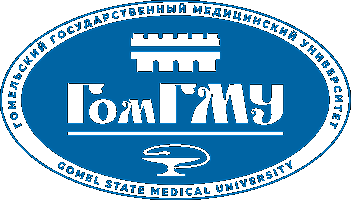Саркопения: особенности проявления у пациентов с сахарным диабетом
View/
Date
2023Author(s)
Навменова, Я. Л.
Махлина, Е. С.
Гавриленко, Д. И.
Бортновская, М. Н.
Демьяненко, И. Н.
Metadata
Show full item recordCitation
Саркопения: особенности проявления у пациентов с сахарным диабетом / Я. Л. Навменова [и др.] // Проблемы здоровья и экологии. – 2023. – Т. 20, № 4. – С. 26-34.
Abstract
Цель исследования. Провести оценку параметров саркопении (СП) и факторов, влияющих на них, у пациентов
с сахарным диабетом (СД).
Материалы и методы. Проведено исследование 87 госпитализированных пациентов с СД (29 мужчин — 33 %
и 58 женщин — 67 %) в возрасте от 21 до 61 года. Исследование включало определение клинико-лабораторных
показателей, включая антропометрические данные, лабораторные показатели, определение параметров саркопении (мышечная масса, мышечная сила, мышечная функция), ультразвуковое исследование скелетных мышц.
Результаты. Снижение мышечной массы отмечено у 11 % пациентов с СД и зависит от композиционного
состава тела. Снижение мышечной функции отмечено у 30 % пациентов с СД и зависит от возраста пациента
(более 41 года; AUS — 0,826; р < 0,001) и степени избытка массы тела (у 87 % пациентов ИМТ более 30 кг/м2).
Снижение мышечной силы отмечено у 44 % пациентов и зависит от степени выраженности диабетической нейропатии (более 1 балла по результатам шкалы NDSm; AUS — 0,876; р < 0,001). Окружность голени положительно взаимосвязана с толщиной промежуточной широкой мышцы бедра (rs = 0,44; р < 0,05) и толщиной кожно-мышечной складки (rs = 0,70; р < 0,05), определенными с помощью ультразвуковой методики.
Заключение. Вероятность СП отмечена у 44 % пациентов с СД и зависит от стажа СД и степени выраженности
диабетической нейропатии. Мышечная функция снижена у 30 % пациентов с СД и связана с возрастом пациента
и избыточным весом. Снижение мышечной массы отмечено у 11 % пациентов с СД и зависит от композиционного состава тела. Толщина промежуточной широкой мышцы бедра и толщина кожно-мышечной складки на уровне
бедра (по результатам УЗИ) достоверно взаимосвязаны с мышечной массой. Objective. To evaluate the parameters of sarcopenia (SP) and the factors affecting them in patients with diabetes mellitus
(DM).
Materials and methods. A study of 87 hospitalized patients with DM (29 men — 33% and 58 women — 67%) aged
21 to 61 years was conducted. The study included the determination of clinical and laboratory parameters, including
anthropometric data, laboratory parameters, determination of sarcopenia parameters (muscle mass, muscle strength,
muscle function), ultrasound examination of skeletal muscles.
Results. A decrease in muscle mass was observed in 11% of patients with DM and depends on the composition of
the body. A decrease in muscle function was observed in 30% of patients with DM and depends on the patient’s age
(over 41 years; AUS — 0.826; p < 0.001) and the degree of excess body weight (in 87% of patients, BMI is more than
30 kg/m2). A decrease in muscle strength was noted in 44% of patients and depends on the severity of diabetic neuropathy
(more than 1 point according to the results of the NDSm scale; AUS — 0.876; p < 0.001). The circumference of the
lower leg is positively correlated with the thickness of the intermediate broad thigh muscle (rs = 0.44; p < 0.05) and the
thickness of the musculoskeletal fold (rs = 0.70; p < 0.05), determined by ultrasound technique.
Conclusion. The probability of SP was noted in 44% of patients with DM and depends on the length of DM and the
severity of diabetic neuropathy. Muscle function is reduced in 30% of patients with DM and is associated with the patient’s
age and overweight. A decrease in muscle mass was observed in 11% of patients with DM and depends on the
composition of the body. The thickness of the intermediate broad thigh muscle and the thickness of th
Subjects
сахарный диабет
саркопения
мышечная масса
мышечная сила
мышечная функция
diabetes
sarcopenia
muscle mass
muscle strength
muscle function
Collections
- Том 20, № 4 [21]
